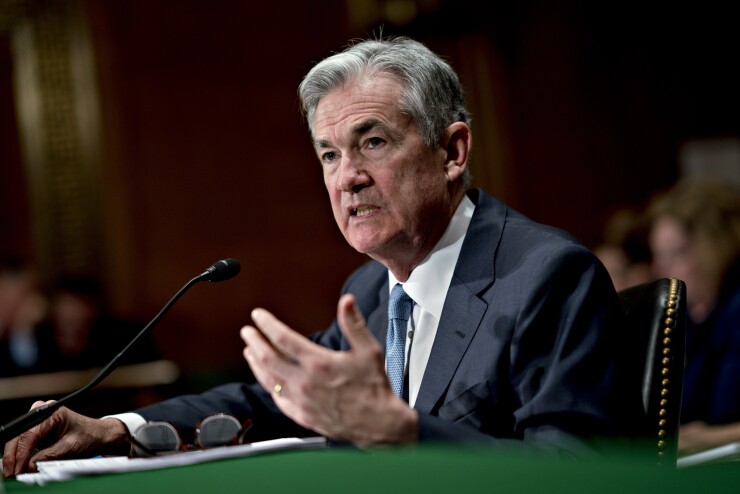The Federal Reserve's target federal funds rate is as high as it has been in a decade and is unlikely to go any lower in the foreseeable future, Chair Jerome Powell said Friday. But just how this new reality will affect banks individually depends in large part on what's in their loan books.
During a speech at the Federal Reserve Bank of Kansas City's economic symposium in Jackson Hole, Wyoming, Powell said

"Restoring price stability will likely require maintaining a restrictive policy stance for some time," he said. "The historical record cautions strongly against prematurely loosening policy."
Powell's speech comes on the heels of the first signs that inflation may be easing. Inflation data from
Chris Maher, chairman and chief executive of OceanFirst Bank in Toms River, New Jersey, said the paradigm shift is needed.
"Ultralow rates are not normal and shouldn't exist, other than in points of extreme crisis," Maher said. "Whether rates go up a little bit, down a little bit or hold flat, we should not be returning to that zero rate scenario. We're going into a period that can be probably a lot more normal than what we've experienced."
Maher said higher rates, at face value, should boost bank activity in the near term. When the Fed's funds rate is at its lower bound, as it was from March 2020 to March 2022, banks can borrow from the Fed at virtually no cost, giving them no incentive to take on risk by making loans.

"Commercial banks have this natural arbitrage between the deposits they bring in and the high quality assets and loans they put in their books," Maher said. "In a zero-rate world, there's no value to them, because you can borrow money at zero, so why do you need deposits and where's the big value add? Whatever the neutral rate is … you're going to have a more traditional slope and level to the yield curve."
Peter Earle, an economist with the American Institute for Economic Research, said higher rates will lead to a return of a "classic balance" between higher profitability derived from making more loans and increased costs related to servicing them.
"It's going to be the classic way of higher profitability and more costs associated with those that fall through the cracks," Earle said. "That's in all areas but, in particular, you're going to see that in auto and motorcycle loans, and sort of the areas that have been problematic for banks in the past."
To take advantage of this new interest rate environment, banks must first be insulated from legacy implications of the previous era. If banks have a preponderance of low-yielding, long-hold assets on their balance sheets, this could make it difficult to finance new, short-term liabilities. This is known as
Komal Sri-Kumar, a senior fellow at the Milken Institute and an independent macroeconomic consultant, said this imbalance could ultimately hinder the ability of banks and other financial institutions to lend. If this happens at a large enough scale, he added, it could have ripple effects on the broader economy.
"To the extent that banks were not hedged on their long-term exposures, their longer dated portfolios are going to be yielding less than what they have to pay when they borrow short term," Sri-Kumar said. "That is a risk to the institution. They are going to cut back on their lending and that is one factor in causing a recession."
Karen Petrou, managing partner at Federal Financial Analytics, said most banks are keenly aware of this risk and have taken measures to mitigate it, chiefly by diversifying their mix of funding sources. But as rates continue to rise, further adjustments will likely become necessary, she said, noting that just what those changes look like will depend on a number of factors.
"As the cost of funds rises to the extent it does, the lending mix is going to change. Banks may start to move funds out of excess reserves and start to put them into the economy, and that would be very good for the economy and good for the banks, but that's not going to happen in a recession," Petrou said. "The lending may have a higher return, but it's also higher risk as demand goes down. There's so many moving parts here. It's quarter by quarter, bank by bank."





